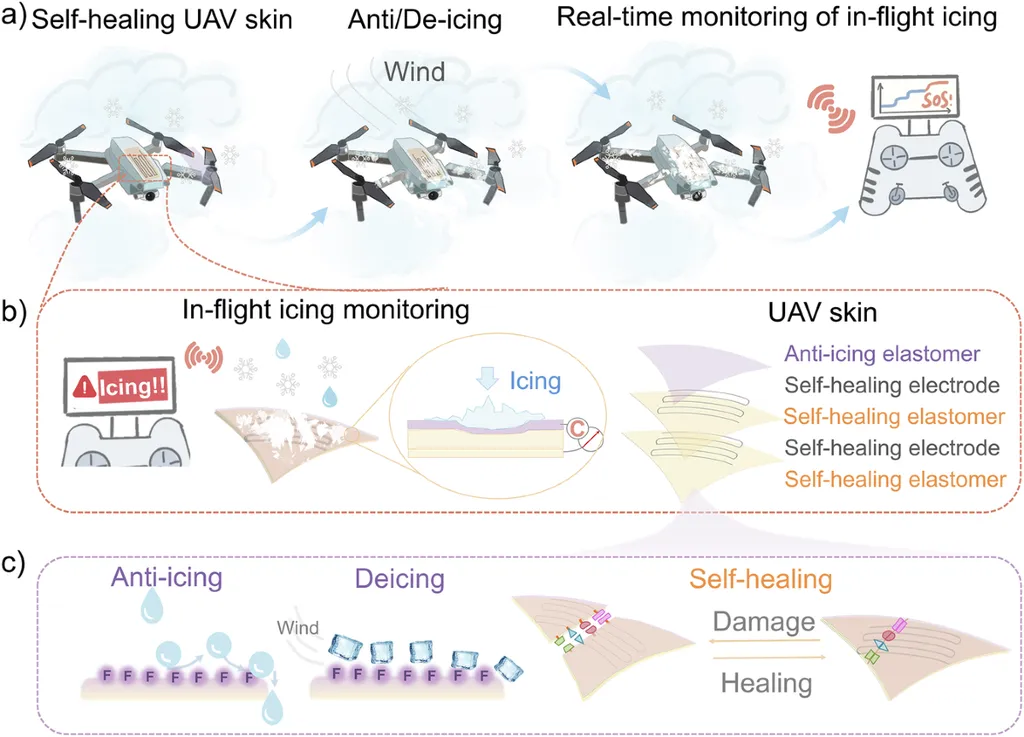In the world of unmanned aerial vehicles (UAVs), in-flight icing is a persistent challenge, contributing to a quarter of all drone accidents. The sensitivity of UAVs to weight increase makes traditional anti-icing methods, like electrothermal deicing systems, impractical due to their power and payload demands. However, a groundbreaking study led by Sijia Xu from the School of Synthetic Biology and Biomanufacturing at Tianjin University, published in the journal *npj Flexible Electronics* (translated to English as “npj Flexible Electronics”), offers a promising solution: a self-healing, intelligent skin for UAVs that prevents icing and monitors flight conditions in real time.
The innovative skin, developed by Xu and their team, is a multi-layered marvel. It comprises self-healing supramolecular elastomers and electrodes, topped with a specially designed fluoropolymer encapsulation layer. This layer significantly reduces ice nucleation temperature to -28.4°C and ice adhesion strength to just 33.0 kPa, making it highly effective in preventing ice buildup. “This skin not only provides anti-icing and icephobic capabilities but also enables real-time monitoring of in-flight icing,” Xu explains. The skin’s self-healing properties ensure that its sensing performance is fully restored even after damage, a critical feature for maintaining UAV functionality in harsh conditions.
The implications for the energy sector are substantial. UAVs are increasingly used for inspecting wind turbines, power lines, and other energy infrastructure, tasks that often involve flying in icy or extreme weather conditions. The self-healing intelligent skin could enhance the safety and reliability of these operations, reducing downtime and maintenance costs. “This technology paves the way for intelligent UAVs to operate safely under extreme weather conditions,” Xu notes, highlighting the potential for broader applications in industries where UAVs are deployed in challenging environments.
The research represents a significant leap forward in UAV technology, addressing a longstanding issue with a sophisticated yet practical solution. As the energy sector continues to rely on UAVs for critical inspections and maintenance, innovations like this self-healing skin will be instrumental in ensuring the safety and efficiency of these operations. The study, published in *npj Flexible Electronics*, underscores the importance of interdisciplinary research in driving technological advancements that can shape the future of various industries.

